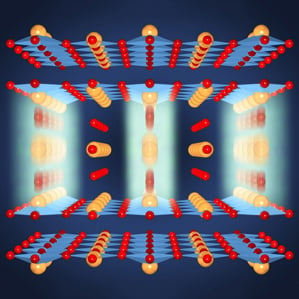Are High-Temperature Superconductors Making Any Progress?
When materials conduct electricity, some energy is wasted as heat. This loss is known as resistance. Under certain conditions, though, some materials have no resistance at all. These materials are called superconductors, and their efficiency in carrying electricity and generating magnetic fields makes them crucial in applications such as magnetic resonance imaging (MRI) machines and Japan’s super-fast maglev train system.

But these conventional superconductors must be cooled with liquid helium to about −270 °C, which is expensive and limits where they can be used. High-temperature superconductors, first made in the 1980s, become superconducting at about −135 °C, which allows for more practical cooling processes that use liquid nitrogen. These materials could have more wide-ranging benefits, like delivering more power to cities and providing energy storage for their grids (see “Superconducting Magnets for Grid-Scale Storage”). They could also greatly reduce the size of wind power generators, and they might be used in supercomputers.
High-temperature superconductors have been demonstrated in a few niche applications, including a cable feeding power to Long Island (see “A More Robust Grid for Manhattan”) and on a U.S. Navy ship. A Chicago utility is considering superconducting cables that provide 10 times as much power as copper wires the same size. They could help reduce power outages, because they can quickly move power between substations in amounts that would fry traditional equipment.
But the newer materials are limited because they are difficult to make. Scientists are still trying to learn more about how these high-temperature superconductors work, with the goal of one day creating materials that have these properties at room temperature. There have been some recent advances in the field.
Warming up
Physicists at Hamburg’s Max Planck Institute for the Structure and Dynamics of Matter showed that a high-temperature superconductor subjected to pulses from an infrared laser lost its electrical resistance at room temperature. The laser pulses appeared to shift atoms in the ceramic-based material’s crystal lattice, say the scientists in a Nature letter. This change was observed for only trillionths of a second, but it could give scientists more clues about how to make superconductors that function at higher temperatures.
At the University of Southern California, scientists have assembled a cluster of aluminum atoms that showed superconductivity at −173 °C rather than −272 °, which is needed to turn typical aluminum into a superconductor. The research was published in Nano Letters on January 28.
More experiments
Because scientists haven’t known exactly what makes materials act as high-temperature superconductors, the process of finding new ones has been difficult. Last June, University of Cambridge scientists discovered that superconductivity in these materials comes from twisted “pockets” of electrons. The details are described in a July letter in Nature. The university provides a photo of these pockets and more information on the study here.
Working with scientists in Japan, Taiwan, and Scotland, Cornell University researchers describe how they may have found the “fingerprint” of characteristic activity in the electrons in high-temperature iron superconductors. The scientists describe this theoretical approach in a Nature Physics letter.
At the same time, some discoveries are posing setbacks for scientists. In a Nature Physics article, for example, Stanford researchers explain how they discovered unexpected behavior in a copper oxide material. An animated video shows what they found.
Stronger materials
Some of today’s high-temperature superconductors can carry so much current they generate magnetic fields 100 times more powerful than a refrigerator magnet. The material needs to be able to contain the strength of that magnetic field, or else it will explode. Last June, engineers from the University of Cambridge, Florida State University, and Boeing broke a 2003 record for the strength of a magnetic force that could be “trapped” inside a superconductor. The results were detailed in Superconductor Science and Technology.
The Takeaway:
Continuing questions about why materials become high-temperature superconductors have made it difficult to design new ones that are more practical to make and use. Michael Norman, a distinguished fellow at Argonne National Laboratory, recently outlined research on high-temperature superconductors over the years in a Nature review. It helps show why the ultimate goal of developing a room-temperature superconductor is far away.
Do you have a big question? Send suggestions to questionoftheweek@technologyreview.com.
Keep Reading
Most Popular
Large language models can do jaw-dropping things. But nobody knows exactly why.
And that's a problem. Figuring it out is one of the biggest scientific puzzles of our time and a crucial step towards controlling more powerful future models.
How scientists traced a mysterious covid case back to six toilets
When wastewater surveillance turns into a hunt for a single infected individual, the ethics get tricky.
The problem with plug-in hybrids? Their drivers.
Plug-in hybrids are often sold as a transition to EVs, but new data from Europe shows we’re still underestimating the emissions they produce.
Google DeepMind’s new generative model makes Super Mario–like games from scratch
Genie learns how to control games by watching hours and hours of video. It could help train next-gen robots too.
Stay connected
Get the latest updates from
MIT Technology Review
Discover special offers, top stories, upcoming events, and more.